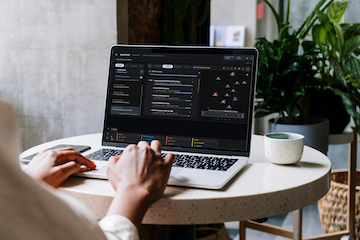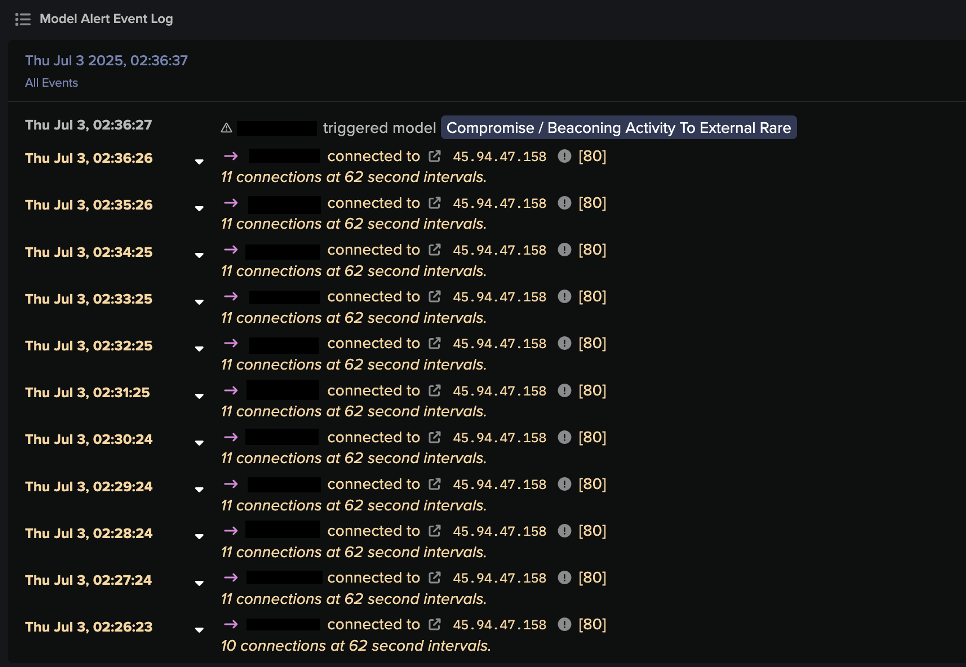Introducing Exploit Prediction Assessment
Security teams are drowning in vulnerability alerts, but only a fraction of those issues pose a real threat. The new Exploit Prediction Assessment feature in Darktrace / Attack Surface Management helps teams cut through the noise by validating which vulnerabilities on their external attack surface can be actively exploited.
Instead of relying solely on CVSS scores or waiting for patch cycles, Exploit Prediction Assessment uses safe, targeted simulations to test whether exposed systems can be compromised, delivering fast, evidence-based results in under 72 hours.
This capability augments traditional pen testing and complements existing ASM workflows by transforming passive discovery into actionable insight. With EPA, security teams move from reacting to long lists of potential vulnerabilities to making confident, risk-based decisions on what actually matters.
Key highlights of Exploit Prediction Assessment
Simulated attacks to validate real risk
Exploit Prediction Assessment conducts safe, simulated attacks on assets with potential security vulnerabilities that have been identified by Darktrace / Attack Surface Management. This real-time testing validates your systems' susceptibility to compromise by confirming which vulnerabilities are present and exploitable on your attack surface.
Prioritize what matters most
Confirmed security risks can be prioritized for mitigation, ensuring that the most critical threats are promptly addressed. This takes the existing letter ranking system and brings it a step further by drilling down to yet another level. Even in the most overwhelming situations, teams will be able to act on a pragmatic, clear-cut plan.
Fast results, tailored to your environment
Customers set the scope of the Exploit Prediction Assessment within Darktrace / Attack Surface Management and receive the results of the surgical vulnerability testing within 72 hours. Users will see 1 of 2 shields:
1. A green shield with a check mark: Meaning no vulnerabilities were found on scanned CVEs for the asset.
2. A red shield with a red x: Meaning at least one vulnerability was found on scanned CVEs for the asset.
Why it's a game changer
Traditionally, attack surface management tools have focused on identifying exposed assets and vulnerabilities but lacked the context to determine which issues posed the greatest risk. Without context on what’s exploitable, security teams are left triaging long lists of potential risks, operating in isolation from broader business objectives. This misalignment ultimately leads to both weakened risk posture and cross team communication and execution.
This is where Continuous Threat Exposure Management (CTEM) becomes essential. Introduced by Gartner, CTEM is a framework that helps organizations continuously assess, validate, and improve their exposure to real-world threats. The goal isn’t just visibility, it’s to understand how an attacker could move through your environment today, and what to fix first to stop them.
Exploit Prediction Assessment brings this philosophy to life within Darktrace / Attack Surface Management. By safely simulating exploit attempts against identified vulnerabilities, it validates which exposures are truly at risk—transforming ASM from a discovery tool into a risk-based decision engine.
This capability directly supports the validation and prioritization phases of CTEM, helping teams focus on exploitable vulnerabilities rather than theoretical ones. This shift from visibility to action reduces the risk of critical vulnerabilities in the technology stack being overlooked, turning overwhelming vulnerability data into focused, clear actionable insights.
As attack surfaces continue to grow and change, organizations need more than static scans they need continuous, contextual insight. Exploit Prediction Assessment ensures your ASM efforts evolve with the threat landscape, making CTEM a practical reality, not just a strategy.
Exploit Prediction Assessment in action
With Darktrace / Attack Surface Management organizations can get Exploit Prediction Assessment, and the cyber risk team no longer guesses which vulnerabilities matter most. Instead, they identify several externally exposed areas of their attack surface, then use the feature to surgically test for exploitability across these exposed endpoints. Within 72 hours, they receive a report:
Positive outcome: Based on information in the html or the headers it seems that a vulnerable software version is running on an externally exposed infrastructure. By running a targeted attack on this infrastructure, we can confirm that it cannot be abused.
Negative outcome: Based on information in the html or the headers it seems that a vulnerable software version is running on an externally exposed infrastructure. By running a targeted attack on this infrastructure, we can confirm that it can be exploited, so we can predict it being exploited.
This second outcome changes everything. The team immediately prioritizes the exploitable asset for patching and takes the necessary adjustments to mitigate exposure until the fix is deployed.
Instead of spreading their resources thin across dozens of alerts, they focus on what poses a real threat, saving time, reducing risk, and demonstrating actionable results to stakeholders.
Conclusion
Exploit Predication Assessment bolsters Darktrace’s commitment to proactive cybersecurity. It supports intelligent prioritization of vulnerabilities, keeping organizations ahead of emerging threats. With this new addition to / Attack Surface Management, teams have another tool to empower a more efficient approach to addressing security gaps in real-time.
Stay tuned for more updates and insights on how Darktrace continues to develop a culture of proactive security across the entire ActiveAI Security Platform.
[related-resource]
See your attack surface clearly
Discover, validate, and prioritize real risks across your external assets with Darktrace / Attack Surface Management
.avif)
.jpeg)




























![Autonomous Response’s suggested actions to block suspicious connectivity to IP 45.94.47[.]149 for the device within the second customer environment.](https://cdn.prod.website-files.com/626ff4d25aca2edf4325ff97/6931e3cb1ddc36af8205720b_Screenshot%202025-12-04%20at%2011.40.54%E2%80%AFAM.png)

![Cyber AI Analyst investigation finding a successful POST request to 45.94.47[.]144 for the device within the third customer environment.](https://cdn.prod.website-files.com/626ff4d25aca2edf4325ff97/6931e41d22eb7e9a3e8217d5_Screenshot%202025-12-04%20at%2011.42.15%E2%80%AFAM.png)

